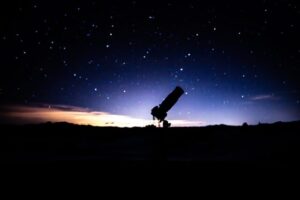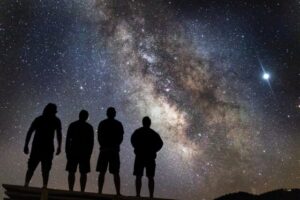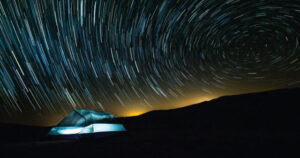The closest star system to the Earth is the famous Alpha Centauri group. Located in the constellation of Centaurus (The Centaur), at a distance of 4.3 light-years, this system is made up of the binary formed by the stars...
A team of international researchers used state-of-the-art modelling techniques to extensively study the atmosphere of a ‘hot Jupiter’ found 150 lightyears from Earth.
Fascinating new light could be shed on the complex atmospheres of planets which orbit stars outside our...
Volcanic dome Ahuna Mons rises above a foreground impact crater, as seen by NASA's Dawn spacecraft with no vertical exaggeration. Eruptions of salty, muddy water built the mountain by repeated eruptions, flows, and freezing. Streaks from falls of rocks...
Images of Ceres made using combined Dawn and 2005 HST ultraviolet-visible wavelength images. Credit: NASA/JPL-Caltech/UCLA/MPS/DLR/IDA/Philip Stooke/Ian Regan
Hubble Space Telescope observations of the dwarf planet Ceres have discovered the first evidence of sulfur, sulfur dioxide and graphitized carbon found on...
NASA Astronaut Kate Rubins sequenced DNA in space for the first time ever for the Biomolecule Sequencer investigation, using the MinION sequencing device.Credits: NASA
For the first time ever, DNA was successfully sequenced in microgravity as part of the Biomolecule...
Conceptual animation (not to scale) showing the Sun's corona and solar wind. Credit: NASA's Goddard Space Flight Center/Lisa Poje
Ever since the 1950s discovery of the solar wind - the constant flow of charged particles from the sun - there's...
In this spacecraft image of Phobos, red arrows indicate a chain of small craters whose origin researchers were able to trace back to a primary impact at the large crater known as Grildrig.Credit: ESA/Mars Express, modified by Nayak &...
A comparison of visualizing galaxies with and without ZFOURGE. Credit: Texas A&M University
An international team of astronomers, including Carnegie’s Eric Persson, has charted the rise and fall of galaxies over 90 percent of cosmic history. Their work, which includes...
Artist's impression of the planet orbiting the red dwarf star Proxima Centauri.Credit: ESO
The world's attention is now on Proxima Centauri b, a possibly Earth-like planet orbiting the closest star, 4.22 light-years away. The planet's orbit is just right to...
The HI-SEAS habitat on the northern slope of Mauna Loa in Hawaii where six people lived in isolation for a year in a NASA experiment to prepare for a journey to Mars
Six people who were isolated on a remote...
This artist's impression shows the Milky Way as it may have appeared 6 million years ago during a "quasar" phase of activity. A wispy orange bubble extends from the galactic center out to a radius of about 20,000 light-years....
























